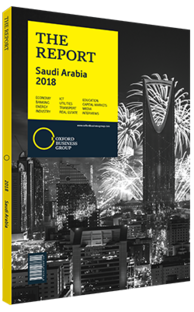Prince Saud bin Nayef Al Saud, Governor, Eastern Province: Interview

Interview: Prince Saud bin Nayef Al Saud
In what fields can the Eastern Province lead progress towards Saudi Arabia’s Vision 2030 goals?
PRINCE SAUD BIN NAYEF AL SAUD: The Vision 2030 strategy relies on effective collaboration among all government bodies as the supporting foundation for a successful endeavour. The Eastern Province is an integral player, and can invest its various resources – mainly its economic ones – to contribute to Vision 2030. The Eastern Province is home to first-rate petrochemical and basic industries, which makes it an important enabler of the manufacturing industry, creating jobs as well as small and medium-sized investment opportunities, which is itself an objective of Vision 2030.
King Salman inaugurated Ras Al Khair Industrial City to give the region an edge in mining, an essential sector targeted for development. Upon its commissioning, Ras Al Khair will be a mega-industrial complex comprising three vital economic sectors: mining; construction and maintenance of large ships - a new territory of expertise for the Kingdom; and manufacturing, which will be fed by aluminium, iron and petrochemical feedstock, and which will open new horizons for the manufacturing in the Kingdom, such as automobiles and parts. The recently-approved 50-sq-km Industrial Energy City will focus on localising manufacturing, increasing local content, and creating jobs and investment opportunities.
As for women’s participation and increasing job opportunities to reach the 30% target, there are efforts to create industrial oases within the cities and industrial complexes. Alahsa is expected to accommodate the first industrial oasis designated for women.
What progress is being made in developing complex industries such as auto manufacturing?
PRINCE SAUD: The Eastern Province is renowned for its oil and petrochemical sectors, in addition to the saline water conversion and power generation. We have had years of success in manufacturing complex spare parts used in the energy and petrochemicals industries, and in power generation.
Within the auto industry there have been successful experiments to assemble some cars, and some parts for car batteries manufactured here made it all the way to the US market – a success story that encouraged a European partnership as well. Agreements signed between Saudi Arabia and Japan yielded assembly and manufacturing of some spare parts in the Kingdom. The availability of the basic materials for auto manufacturing suggests the sector will thrive in the future; Ma’aden exports car-grade aluminium while Saudi Basic Industries Corporation produces materials necessary for manufacturing exterior auto parts and the main chassis. The knowledge transfer of foreign expertise to ambitious young Saudis will further contribute to the development of the industry.
As industry subsidies are reduced, what competitive advantages does the Kingdom have in terms of retaining foreign direct investment (FDI)?
PRINCE SAUD: The Public Investment Fund budget has been increased to SR65bn ($17.3bn) and another SR25bn ($6.7bn) has been allocated to support industrial projects. The Kingdom has undertaken a strategy to bring industry to a higher level of complexity in mining, renewable energy, manufacturing, automobiles, pharmaceuticals, and electronics, increasing added value and supporting localisation.
The most evident competitive advantages include specialised industrial cities; the advanced infrastructure within and outside of these cities; raw material and energy resources; the international ports on the Red Sea and Arabian Gulf; sizeable local demand; and low taxes relative to other states. National security and stability should definitely not be overlooked. Establishing an environment which is conducive to FDI is essential if we are to achieve our 5.7% of GDP target for this year in line with Vision 2030 goals.
You have reached the limit of premium articles you can view for free.
Choose from the options below to purchase print or digital editions of our Reports. You can also purchase a website subscription giving you unlimited access to all of our Reports online for 12 months.
If you have already purchased this Report or have a website subscription, please login to continue.

